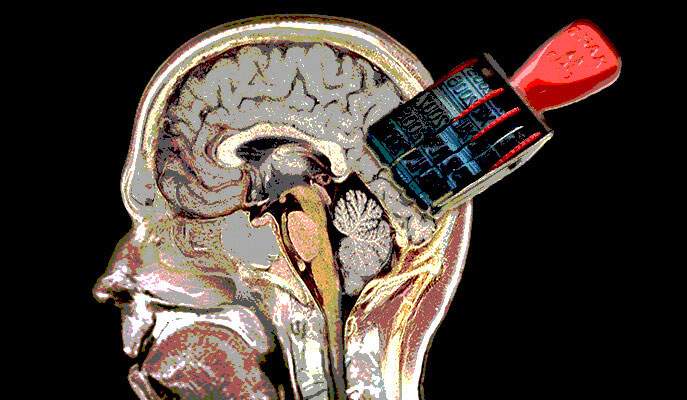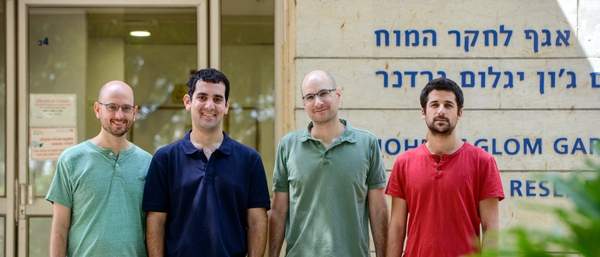Are you a journalist? Please sign up here for our press releases
Subscribe to our monthly newsletter:

When we think back, we often tend to place past events on a timeline. We can recall the order in which we did our errands last week or mentally retrace the travels we undertook last summer. In other words, our brains routinely link the memory of different places and events to a particular time.
Brain researchers know quite a bit about the way various locations are encoded in memory, but relatively little is known about the neural mechanisms that enable the encoding of the time at which events in those locations occur. In a new study published in eLife, Weizmann Institute researchers have revealed the existence of “timestamps” – patterns of neuronal activity in certain groups of nerve cells that are unique to specific points in time.
The team of Dr. Yaniv Ziv in the Neurobiology Department – Dr. Alon Rubin, Nitzan Geva and Liron Sheintuch – recorded the brain activity of mice using an optical imaging method Ziv had developed during his postdoctoral studies: The mice wear a miniature helmet equipped with microscopes and implantable lenses. This method makes it possible to track the firing of thousands of neurons deep within a living brain over a long period of time. The study focused on the hippocampus, the deeply embedded brain structure that forms and stores memories of events. Hippocampal neurons are thought to encode both when and where events have occurred.

Same day, different maze
The “where” component is encoded by the so-called place cells in the hippocampus, which have been extensively studied for more than four decades. In earlier research, Ziv had found that even when mice traveled the same route in a maze every day, this route was represented in their brains by different subsets of place neurons on the different days. He then set out to determine how these long-term memory circuits are altered by time, leading him and his team to discover a “when” component of memory. In the present experiment, the helmeted mice explored two different mazes over the course of several days. On each of those days, hundreds of neurons fired in a particular manner regardless of the mouse’s environment. Ziv and his team found that each point in time was encoded similarly for the two mazes, even though other neuronal patterns encoding spatial representations of these mazes differed substantially. This pattern, or timestamp, changed from day to day − both in terms of the cells involved and the manner of their firing − but it was still recognizable a few days later.
Unlike the neural code for place, which can be detected in the activity of single cells, timestamps are evident only in the gradual changes in firing patterns of fairly large neuronal ensembles. The Weizmann scientists were able to discover the timestamps by recording the activity of many more neurons and for much longer periods of time than had been done before with more traditional recording techniques, as well as by analyzing the data with a computational method they developed. Using their analytical approach, the scientists were able in most cases to accurately guess on which day of the experiment the recording was made just by looking at the data and identifying the timestamp.
Unique, but linked
These findings support the intuitive notion that each experience in life is unique. Even if we visit the same place over and over, the memory of that visit each time engages a somewhat different group of neurons, which represent or store this event with a slightly different timestamp. At the level of neuronal circuits, each experience is therefore uniquely encoded, but it is also linked to other experiences that occurred closely in time.
The scientists suggest that timestamping enables us to cluster memories in time, so that we can recall a number of events as occurring on the same day, or the same part of a day, even if we moved between such different environments as home, work, bus and movie theater during this time. “Timestamps establish temporal relationships between events,” says Ziv. “They do not apply when we link an event to a particular date in the calendar on which we know the event took place – for example, what happened on September 11, 2001. Rather, timestamping maps events relative to one another, possibly contributing to the formation of a personal mental timeline that is essential to our autobiographical memory and sense of self.”
Dr. Yaniv Ziv's research is supported by the Irving I Moskowitz Foundation; the Adelis Foundation; the Lulu P. and David J. Levidow Fund for Alzheimer’s Diseases and Neuroscience Research; the Abraham and Sonia Rochlin Foundation; and the Hymen T. Milgrom Trust donation fund. Dr. Ziv is the incumbent of the Dr. Daniel E. Koshland Career Development Chair.